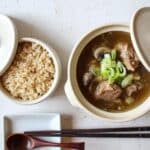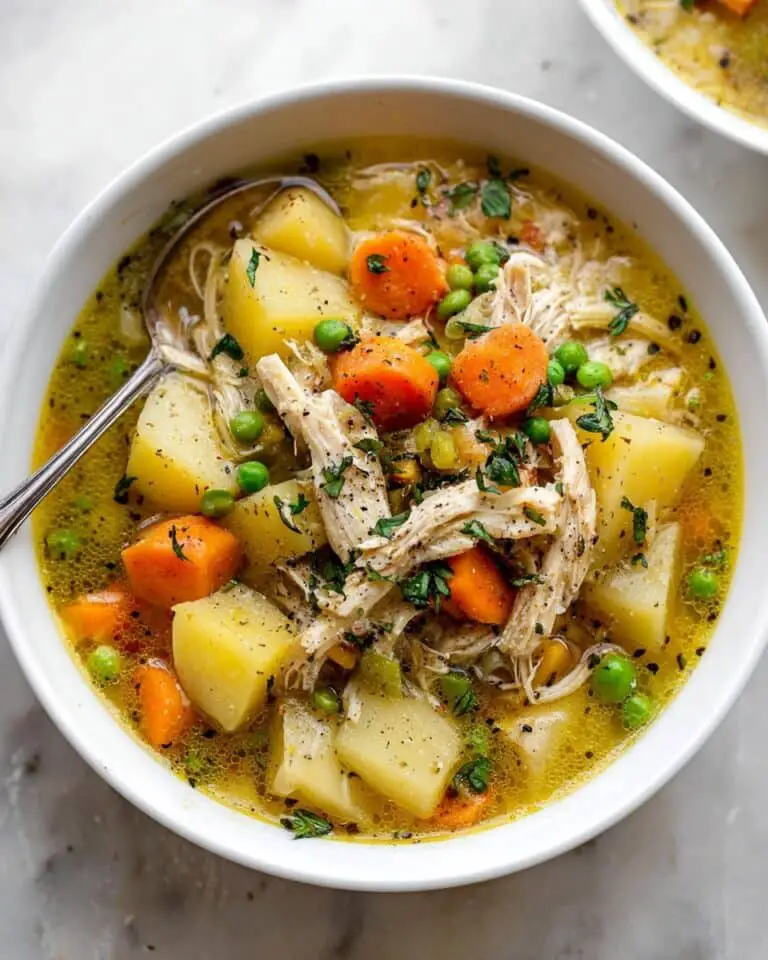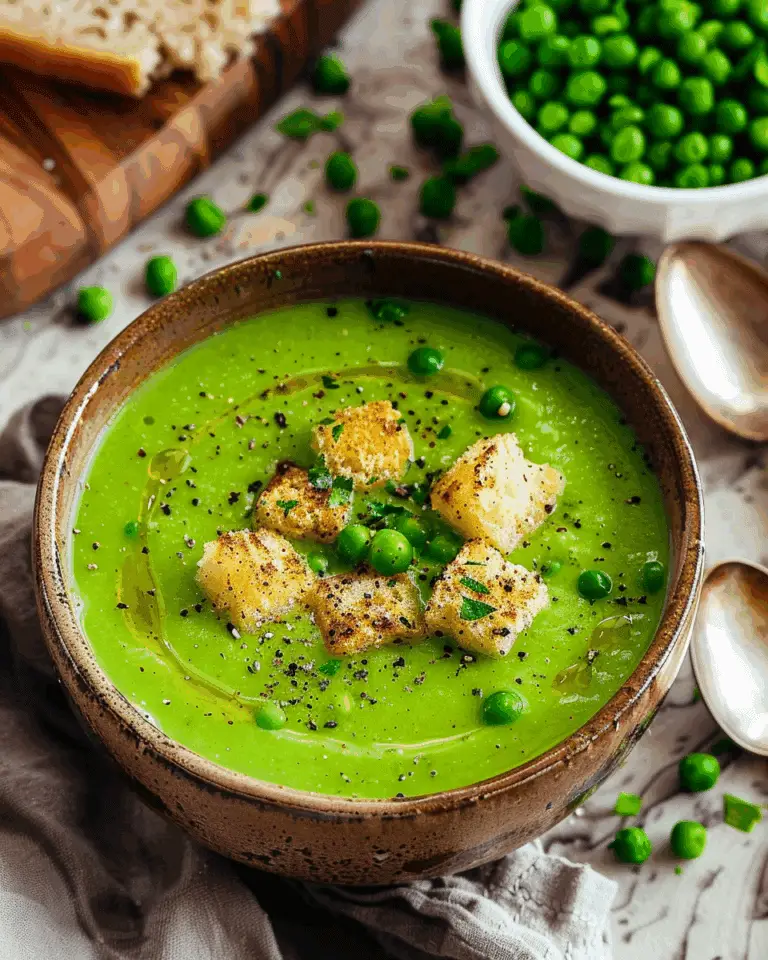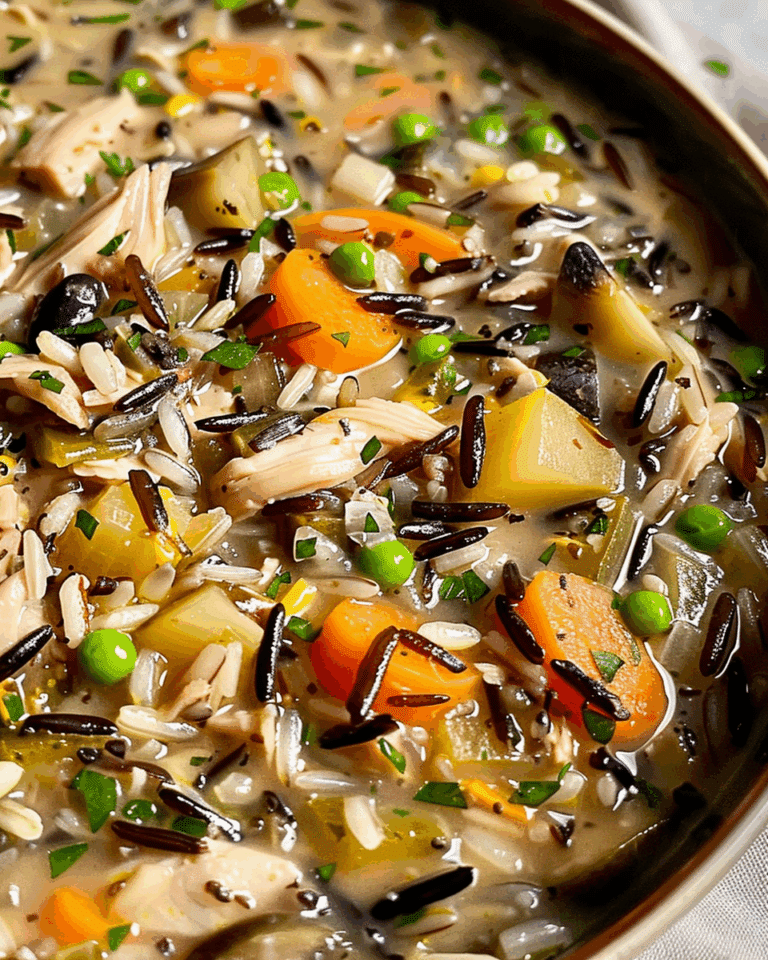Beef Short Rib Soup, or Galbitang, is a comforting Korean dish made with tender beef short ribs simmered for hours until the broth becomes deeply rich and clear. I love how the soup’s light yet hearty flavor makes it perfect for both special occasions and everyday meals. It’s soothing, nourishing, and brings a deep sense of comfort with every spoonful.
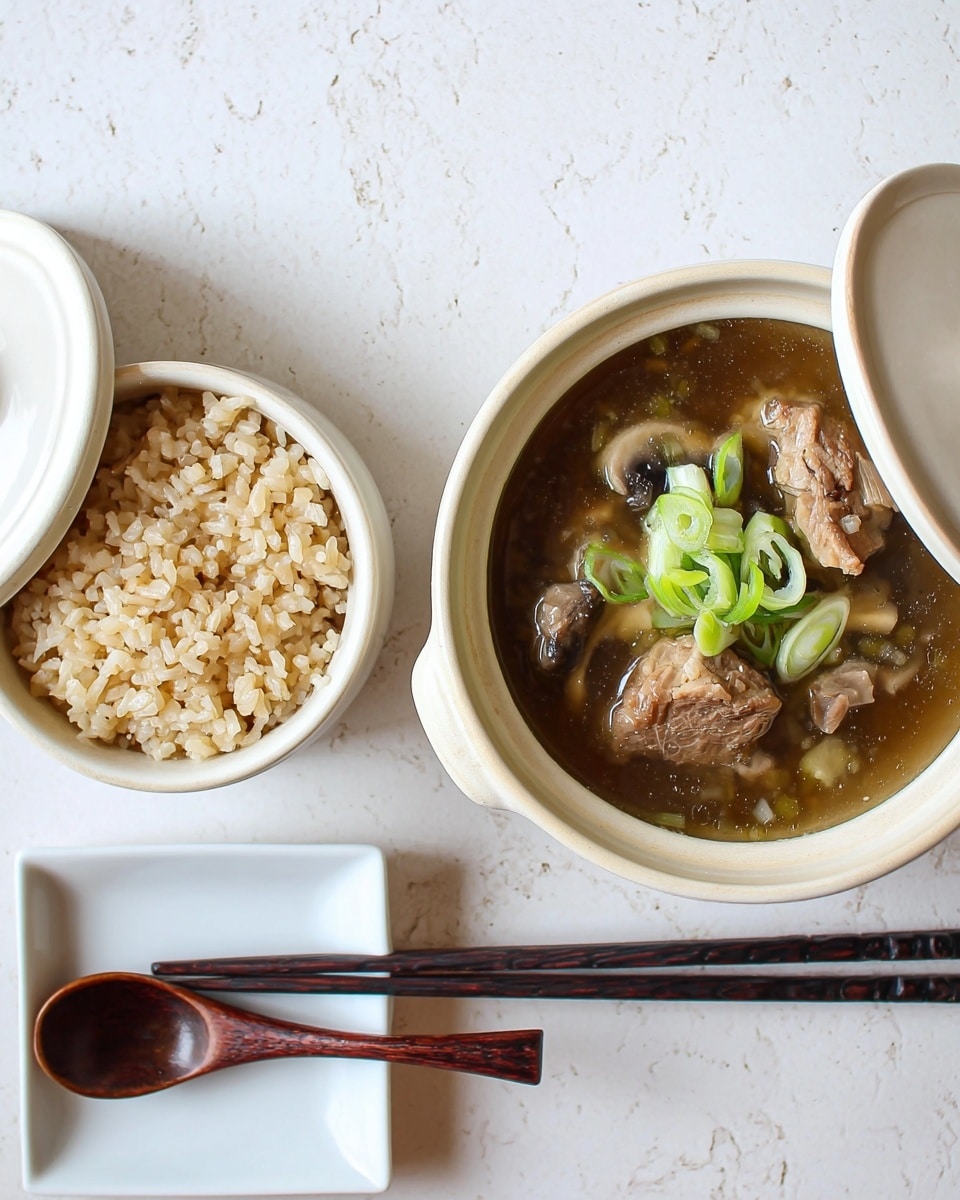
Why You’ll Love This Recipe
I love this recipe because it highlights the pure, natural flavors of the ingredients without being overly complicated. The broth becomes silky and flavorful thanks to the slow simmering of beef bones and vegetables. I enjoy how versatile it is—it can be served as a main dish with rice or as part of a larger Korean meal. It’s one of those recipes that makes my kitchen smell wonderful and my heart feel warm.
Ingredients
(Note: All ingredient amounts are listed in the recipe card below.)
1.5 lb (700 g) beef short ribs (boneless if OK too)
10 Cup water
1 yellow onion with skin on if possible (if it’s organic)
4 green onions or 2 daepa (대파)
2 green onions or 1 daepa for soup stock
2 green onions or 1 daepa, sliced for garnish
2 thick slices of ginger
3-4 dried or fresh green onion roots (optional)
1/2 medium size radish, cut into 1/2 in thin quarter slices
2 T chopped garlic
1 T guk ganjang (soy sauce for soup)
1 1/2 tsp sea salt
Directions
- I start by soaking the beef short ribs in cold water for about 30 minutes to remove excess blood, changing the water a few times.
- Once soaked, I place the ribs in a large pot, cover with water, and bring to a boil for about 10 minutes. Then I discard the water, rinse the ribs, and clean the pot to remove impurities.
- I return the cleaned ribs to the pot with 10 cups of fresh water. I add the onion (with skin if organic), green onions, ginger slices, and optional green onion roots.
- I bring everything to a boil, then reduce to a gentle simmer and cook for about 1.5 to 2 hours until the ribs are tender and the broth turns clear and aromatic.
- I remove the ribs and strain the broth through a fine sieve to discard the vegetables.
- I put the ribs back into the strained broth, add the radish slices, and simmer for another 20–25 minutes until the radish becomes soft.
- I season the soup with guk ganjang, chopped garlic, and sea salt, adjusting to taste.
- I garnish with sliced green onions before serving, enjoying it hot with steamed rice and kimchi.
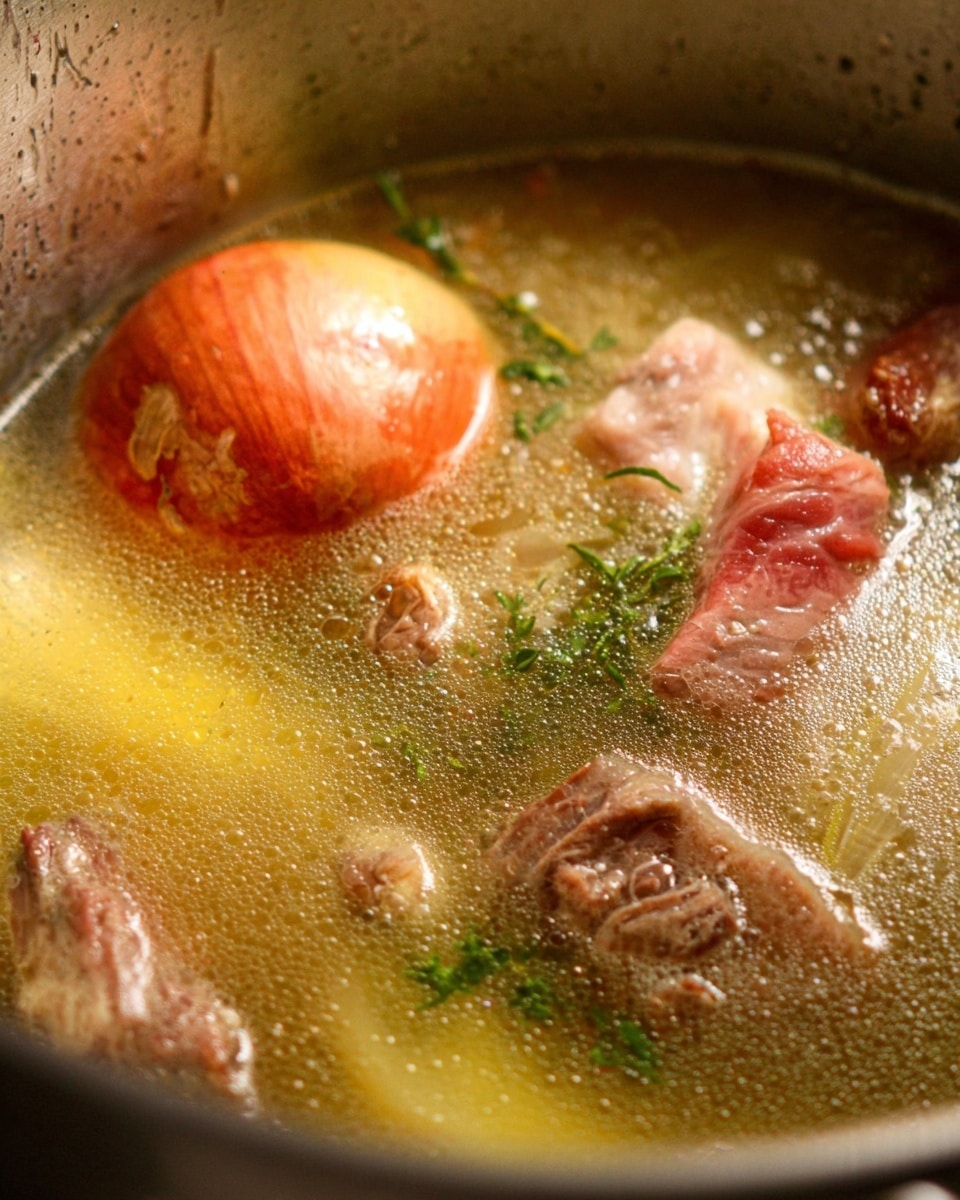
Servings and Timing
This recipe serves about 4 people. The total preparation and cooking time is approximately 2.5 to 3 hours, including soaking and simmering.
Variations
I sometimes add a bit of black pepper or sesame oil at the end for a deeper aroma. For a heartier version, I might include some glass noodles or a beaten egg for added texture. If I want a lighter broth, I reduce the soy sauce and season more with salt. For convenience, I can also make this in an Instant Pot or slow cooker for the same tender results.
Storage/Reheating
I store any leftover soup in an airtight container in the refrigerator for up to 3 days. When reheating, I gently warm it on the stove over medium heat until hot. If the broth thickens after cooling, I add a bit of water to bring it back to the original consistency. It can also be frozen for up to 2 months and thawed overnight in the refrigerator before reheating.
FAQs
How can I make the broth clearer?
I always parboil the ribs first to remove impurities, which helps the final broth stay clear and clean-tasting.
Can I use other cuts of beef?
Yes, I sometimes use brisket or shank if short ribs aren’t available. The flavor will still be delicious, though the texture may vary slightly.
Is Galbitang spicy?
No, it’s a mild soup. I can add chili flakes or sliced chili if I want a bit of heat.
What can I serve with Galbitang?
I like serving it with steamed white rice, kimchi, and a few Korean side dishes like spinach namul or pickled radish.
Can I make it ahead of time?
Yes, I often make it a day before serving. The flavor deepens overnight, and I can easily skim off any solidified fat before reheating.
How do I prevent the ribs from becoming tough?
I make sure to simmer the soup gently over low heat. Boiling too hard can make the meat tough.
Can I make it vegetarian?
I can replace the beef with mushrooms and use vegetable stock for a lighter, meat-free version, though the taste will be different.
How do I know when the ribs are done?
They should be tender enough to pull apart easily with chopsticks or a fork.
Can I use soy sauce instead of guk ganjang?
Yes, but I prefer guk ganjang for its lighter, saltier flavor that doesn’t darken the broth too much.
What’s the best way to garnish Galbitang?
I like topping it with thinly sliced green onions, a sprinkle of black pepper, and sometimes a few drops of sesame oil for aroma.
Conclusion
I love how Galbitang brings warmth and comfort with its clean, rich broth and tender beef. It’s a simple yet deeply satisfying dish that showcases the beauty of Korean home cooking. Whether I make it for a family meal or to nourish myself on a chilly day, it always fills my kitchen with a delicious aroma and my bowl with pure comfort.
PrintBeef Short Rib Soup – Galbitang (갈비탕)
Galbitang (Beef Short Rib Soup) is a traditional Korean comfort dish made with tender beef short ribs simmered for hours to create a clear, rich, and deeply flavorful broth. It’s nourishing, soothing, and perfect for both everyday meals and special occasions.
- Prep Time: 30 minutes
- Cook Time: 2 hours 30 minutes
- Total Time: 3 hours
- Yield: 4 servings
- Category: Soup
- Method: Simmering
- Cuisine: Korean
- Diet: Halal
Ingredients
1.5 lb (700 g) beef short ribs (boneless optional)
10 cups water
1 yellow onion (with skin if organic)
4 green onions or 2 daepa (대파)
2 green onions or 1 daepa for soup stock
2 green onions or 1 daepa, sliced for garnish
2 thick slices of ginger
3–4 dried or fresh green onion roots (optional)
1/2 medium radish, cut into 1/2 in thin quarter slices
2 tbsp chopped garlic
1 tbsp guk ganjang (soy sauce for soup)
1 1/2 tsp sea salt
Instructions
- Soak beef short ribs in cold water for about 30 minutes, changing the water a few times to remove excess blood.
- Place the ribs in a large pot, cover with water, and bring to a boil for 10 minutes. Discard the water, rinse the ribs, and clean the pot to remove impurities.
- Return the cleaned ribs to the pot with 10 cups of fresh water. Add onion, green onions, ginger slices, and optional green onion roots.
- Bring to a boil, then reduce to a gentle simmer. Cook for 1.5 to 2 hours until ribs are tender and the broth is clear.
- Remove ribs and strain the broth through a fine sieve to discard the vegetables.
- Return ribs to the strained broth, add radish slices, and simmer for 20–25 minutes until radish is soft.
- Season with guk ganjang, chopped garlic, and sea salt to taste.
- Garnish with sliced green onions before serving. Serve hot with steamed rice and kimchi.
Notes
Parboil the ribs first to achieve a clear broth.
Simmer gently over low heat to keep the meat tender.
Add black pepper or sesame oil for extra aroma if desired.
Store leftovers in the fridge up to 3 days or freeze up to 2 months.
Reheat gently on the stove and add water if broth thickens.
Nutrition
- Serving Size: 1 bowl (approx. 450 ml)
- Calories: 350
- Sugar: 3 g
- Sodium: 800 mg
- Fat: 22 g
- Saturated Fat: 8 g
- Unsaturated Fat: 12 g
- Trans Fat: 0 g
- Carbohydrates: 6 g
- Fiber: 1 g
- Protein: 32 g
- Cholesterol: 90 mg
